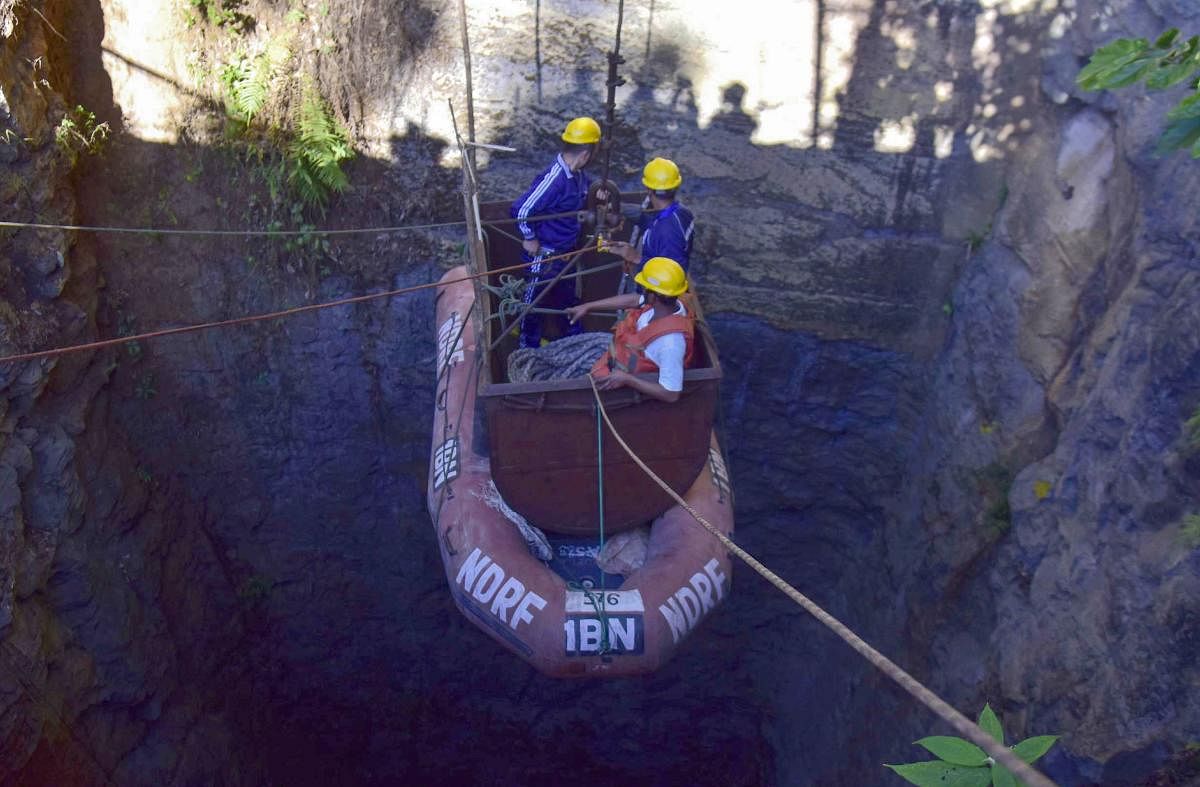
Meghalaya has been in news for all wrong reasons. Disaster struck on December 13 last at a rat-hole coal mine in Jaintia Hills of the state, in which at least 13 miners got trapped due to a deluge of water rushing into the mine.
This was following the breakdown of the chamber due to unscientific illegal mining going on there. Obviously, none will be alive today.
The administration did not even cooperate much with the disaster relief team of National Disaster Response Force (NDRF) which went there for rescue of the labourers.
As the Supreme Court took up the issue, it banned all mining till mid-February when the issue will come up for hearing. The apex court directive was on the expected lines as coal mining has for decades been Meghalaya’s dirtiest open secret.
Around 5,000 such mines, referred to as a rat holes, in an area of 55 per sq km, are allowed by the local administration to function in violation of not just safety norms but also in violation of the order issued by the National Green Tribunal (NGT) in 2014.
These mines are owned by dozens of politicos irrespective of parties and hundreds of small time businessmen who fund politicians of all hues in Meghalaya. The land for these is bought from local tribal families, many of whom are happy with immediate income forgetting that they are dispossessed of their lands for ever.
Each truck load of this illegally mined coal has a minimum profit of Rs 1 lakh after all expenses and the police and administration are well taken care of by the miners. Ironically, mining here is defined as a 'cottage industry' which has limited precautions in law.
Thus, there is an enormous politico-miner-bureaucrat- police-transporter nexus which has allowed this to continue unabated for decades in spite of several such tragedies.
An attempt in 2012 to introduce regulations through a mineral policy remained a non-starter as it was full of holes. The NGT permitted transportation of coal already mined in this sector - which is both organised and unorganised - for which the state and several miners realised the benefits. However, fresh mining continued.
Meanwhile, the labour behind it remained a grey area of poverty-stricken locals, migrants from poorer districts of Assam and from adjacent districts of Bangladesh.
This illegal mining in Meghalaya flourished under the watch of the earlier Congress-led state governments. However, when the NGT banned it, the Congress in the last general election, stood for legalised mining and nationalisation of the mines and bringing them under Coal India Limited. The Congress claims that it lost the election a year ago primarily on this issue.
The BJP, on its part, officially declared in its manifesto that it was in favour of opening up the mines, closed during the elections (following judicial activism), which reportedly gave them support of the miners.
Chief Minister Conrad Sangma of National People's Party had moved the Supreme Court seeking cancellation of the NGT ban and some form of regulated mining instead. He is ruling Meghalaya today with the support of the BJP. That shows the dominant political narrative here.
The crisis today is beyond mining. In August 2018, an NGT bench upheld the 2014 order which began with a public interest litigation filed by an Assam-based non-government organisation representing the Dimasa people, who complained of water bodies being poisoned because of mining in Meghalaya. The 2018 order also noted that illegal mining had continued in this extra-legal industry.
The order said the NGT ban on private illegal mining should be implemented in full force whatever be the political cost. Illegal mining has polluted three rivers of Meghalaya as already pointed out in the reports of CAG and in several ecological surveys.
Mining in Meghalaya is entangled in questions about tribal rights to land and customary laws. The state falls under the Sixth Schedule which protects these rights and autonomies insulating it from national laws to a certain degree.
But the state is not officially exempt from the Coal Mines (Nationalisation) Act of 1973, which gives it the ownership and control of underground minerals, nor has the state government applied for exemption.
This is a national property and if at all it has to be mined, it must be done by a public sector undertaking, like the Coal India Limited (CIL). This should be done with precautions, use of modern technology, safety measures for labourers, and social security and insurance for their families.
Only skilled labour will then be engaged unlike the hapless, jobless, unskilled labour today. A proposal to this effect was finalised between CIL and the Meghalaya govt but the same powerful nexus shelved it.
Overhaul needed
The mining industry as a whole needs a complete overhaul given the spate of illegal sand mining in Madhya Pradesh, KG Basin oil mining and ore mining in Karnataka and Goa.
There is a strong opinion against the use of coal in today’s age and time. While the entire world is moving away from fossil fuel, why are we so eager for coal which is anti-ecology, harmful for public health, dangerous to mine, and creates a mafia at all places where it exists?
These are the times of non-conventional energy with wind and biomass being abundant in Himalayan range including Meghalaya, and tidal and solar energy sources being abundant in the coastal India.
One-time investment on these sources of energy can create long-term unabated sources of energy which is different from fossil fuels with limited and fixed supply.
It needs a different policy approach to go beyond the exigencies of the moment and the greed of those in power.
(The writer is Dean of Pearl Academy, Delhi and Mumbai campuses)